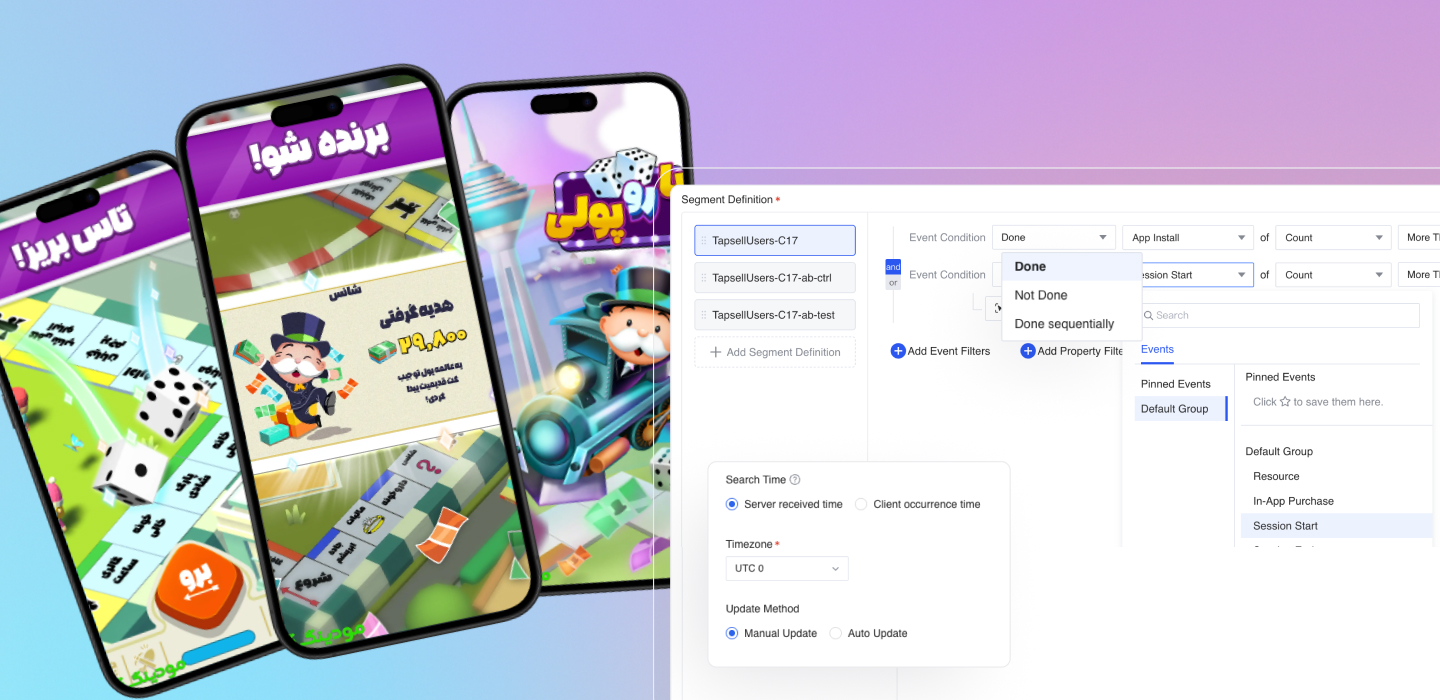
Analytics is a crucial ingredient to perfecting your games. But it can be a pain if it’s not available for you in one place. That’s why HyperVR use GameAnalytics' AnalyticsIQ.
Challenge
When HyperVR started building VR games, they didn’t want to stick with just one platform. They wanted to publish their games across all major VR platforms: Oculus, SteamVR, PSVR and more. With a lean team, creating and maintaining a dedicated analytics stack for each platform wasn’t an option. They needed a feature rich, multi-platform solution to see actionable insights at a glance.
Solution
As one of the most supported and feature-rich platforms out there, GameAnalytics was the obvious choice for HyperVR. Not only could they monitor all their games, but we could scale with them as they grew and released their titles on more VR platforms. With GameAnalytics, HyperVR can see all of the data across their portfolio and builds, and spot bugs early – keeping their games to a premium standard.
An analytics tool that works across all platforms
As HyperVR sought to create a fun, accessible VR experience for all players, they needed an analytics tool that could work across all platforms. With GameAnalytics' AnalyticsIQ, they can quickly and easily track metrics across all their different games, builds, and platforms.
According to Ģirts Ķesteris, Studio Lead at HyperVR, the metrics he tracks the most include session count, item usage, locomotion usage, actions, and events. These help him quickly identify issues and make improvements on the fly.
GameAnalytics is the glue for our games. We’re able to see all of our data across our different games, builds, and platforms quickly. Something we just didn’t find with other tools out there.
Making the game immersive
Identifying any glitches that might break the player's immersion is important when creating an immersive VR game. VR's biggest strength is its ability to make players lose themselves in the game.
VR is all about having an immersive experience. People like to grab stuff and interact with things. And that’s free in VR. While for other games, developers need to come up with special mechanics when picking items up. If you build around that and make it dynamic, then you can make a good game.“It’s easy for something to go wrong. With VR, you need to be aware of your limitations. The top two are how much physical space your players might have, as well as any potential motion sickness. You need to do everything in your power to cater to these.
Tracking all these metrics is key to offering players a personalized experience. HyperVR uses data to identify what works and doesn't work for their players and to fix any pesky bugs in the code.
Keeping a swift and responsive approach to issues
Crashes in games are easy to miss without data. And in VR, these bugs can break the immersion, make your players sick, and ruin your game.
We monitor errors and crashes all the time. We need to make sure the experience is smooth and seamless for all our players. Otherwise, you’ll ruin their experience, and even make them feel unwell. Keeping an eye on your bug report is paramount.
Fixing bugs fast to keep reviews positive
All of our games are premium. So if something breaks, and our rating drops, then there’s a lot of backlash, immediately. Bugs are much more noticeable and personal. You see it in your view, right in front of you. And you’ll have a much more serious reaction. If your game isn’t flawless, then your players are more likely going to leave a bad review and ask for a refund.

A clients review of Shave&Stuff on the Meta Store.
Keep the gameplay short, simple, and satisfying
Wearing a VR headset is pretty intensive. Unlike some PC or console titles gamers play for hours on end, VR sessions are notoriously shorter – similar to that of a casual mobile game.
You need to create cleverly saturated games. After some quick testing in our games in the past, we noticed that our players enjoyed shorter sessions. Your players can’t sit in VR for hours playing games. After 20 minutes or so, they’ll get tired and want to take a break. You want to track what users are doing in your game to perfect your core loop. Analytics is concrete here when adjusting your meta gameplay. Once you have that loop down, you can build on it.
Understanding the platform is a part of perfecting your game. HyperVR kept a close eye on engagement metrics like session length and playtime to understand their audience and find that sweet spot for their games’ levels.
Market test early on
We market tested Shave&Stuff early on. It helped us figure out what worked, and what didn’t work with our players before we put in loads of man-hours investing in specific gameplay and features. We didn’t want to end up wasting any time.
By doing earlier market testing, the team could decide what to focus on. Testing and building a VR game is a lot slower than any other type of game out there. You’re constantly looking for issues and bugs to squash. And every change you make to your game takes up valuable development time. So it’s good to figure out the important parts early on.
Testing is slower and takes more energy since it involves a device on a face that occludes vision. While interactions are a lot easier to do (than say in a PC or mobile game), they require more fidelity and more budget and time.
Get started with analytics today
AnalyticsIQ works across all VR platforms and can help you squash bugs and make data-driven decisions about your own titles, rather than guessing in the dark.


